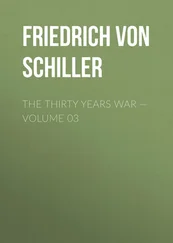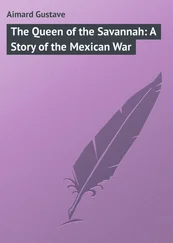September 14, therefore, after several delays on his part, the bell of the cathedral and a salvo of artillery announced at half-past one that the professional saviour of Mexico, who never saved her, had entered the city. Everything possible was done by the authorities to give an appearance of concord and enthusiasm.38 Watched as he knew he was by ostensible friends, Santa Anna played out his distasteful rôle, and so did the rest of the actors. Emblems abounded. Eloquence overflowed. The cathedral chanted Te deums . “Immense multitudes” (hardly perceived by ordinary observers) cheered incessantly—in the official journal. Not only public but private edifices were lavishly decorated—by order. A hired band perambulated the streets. The General listened patiently to a lecture from another man of the people, and replied with edifying humility; and he asked that a well-known statue of himself should be replaced with the national arms. But it was noticed that he and Farías, facing each other in the carriage of honor under a huge picture of the Constitution, looked more like victims than victors; and he would not be present at the grand banquet.41
Having complied with the ultimatum of the government, Santa Anna was now, September 17, appointed commander-in-chief of “The Liberating Army.” “Every day that passes without fighting at the north is a century of disgrace for Mexico,” he then exclaimed; and although he remained in Tacubaya, a suburb of the capital, and was said to be ill, he exerted himself to forward troops, hoping to concentrate 25,000 rapidly at San Luis Potosí. Tidings from the seat of war foreshadowed a battle at Monterey, and increased his anxiety. He exhorted the war department unsparingly.41
But the government was exceedingly poor. According to the Diario only 1839 pesos (dollars) lay in its treasury on September 6. Voluntary offerings for the war took mostly the form of eloquence.39 The million raised by Paredes had nearly vanished in his preparations and the Citadel revolution. Pressure was applied to the clergy, and the Diario asked, Is it not worth while for the merchant to give 100,000 pesos in order to save 900,000? But both of these classes held back stubbornly, and managed the affair so as to escape. One brigade formed on three successive days to march, but had to wait for funds. At length, however, with extreme difficulty about 90,000 pesos were borrowed; and on September 28, after piously seeking the Divine Blessing at Guadalupe,40 Santa Anna with some 2500 men set out. About 3000 were already on their way, and he expected to find a large force at San Luis Potosí.41
As he rolled along in his coach for about 380 miles, drawn by relays of fleet mules, the General probably congratulated himself upon his policy. He was on living terms with the radicals, had been accepted by the Church, had soothed the army, and through Pedraza—recently his enemy and still the enemy of Farías—had reached an understanding with the Moderados. Unquestionably he stood much better with the public than a month before; and he probably did not perceive that his recent course had ensured for himself and the nation a series of most unpalatable surprises.41
Through it all, however, the capital managed easily to be gay, and six “arrogant bulls” were artistically sacrificed in the Plaza de Toros on one of these anxious days.42
XI.
Taylor Sets out for Saltillo
Table of Contents
Arista had scarcely reached Linares when he began, though he knew his military standing had been destroyed, to rebuild the army. Mejía followed in his predecessor’s footsteps, adopted a policy that was both conciliatory and stern to check desertion and bring offenders back to the colors, kept guards out on the roads leading to the Rio Grande, and exerted himself to improve the morale of his troops. Though Linares was a central point within easy reach of all the principal towns of northeastern Mexico, he justly regarded Monterey, a city of twelve or fifteen thousand inhabitants and capital of Nuevo León, as the vital spot, and about the ninth of July transferred his army to that place. Desertion had now ceased, he reported; morale had been restored; and the troops were described as eager to avenge the disasters of May 8 and 9, which in their opinion “they had suffered but not caused.” 1
This view of the situation, however, must be described as rather imaginative and extremely incomplete. It was hard to find money and hard to find mounts. As late as August 19 Mejía admitted that neither Mexicans nor foreigners would advance him funds, and even after paying for horses he could not obtain them. Two of the governors in this quarter would give him no aid, and still less were the people inclined to rise for the national defence. Both troops and artillery came far short of the requirements. Though Arista had called for reinforcements on April 24, not a man from the south had arrived by August 20. Including the scattered and almost worthless Presidials, the total number of soldiers in the region—outside of Tampico—was less than 3000, and about one third of these could not easily be concentrated at headquarters. Ill-fed, ill-clothed, soured by misfortune, smarting under the general contempt, some desiring Mejía and some Ampudia for commander, still more wishing Arista back, and all wrangling bitterly, even if less bitterly than at first, over the conduct of their generals and officers, the army had for chief a little, pockmarked man in blue glasses, who looked like a sot, and thus far in the campaign had been distinguished only for bad health and a pompous vocabulary.2
Mejía’s plan was to conduct a guerilla warfare, save the army from further disgrace in the field, and make a stand at Monterey. General Canales and the irregulars were, therefore, his first line; but the “Chaparral Fox,” who entertained revolutionary designs for which he desired American support, had managed so as to do us no harm in the battles of May 8 and 9, and proposed to continue that policy. Mejía suspected his intentions, yet could not prove him a traitor, and sent him funds and horses grudgingly; whereupon Canales, protesting that his loyal aims were paralyzed by Mejía’s personal ill-will and stinginess, made the cause of Mexico odious by robbing and outraging the people under cover of her flag. At length, early in August, Mejía concluded to give him about a thousand men, and ordered him to annoy the Americans in every possible way; but the General reported that his horses were too weak to trot three miles, and that he saw little prospect of injuring or even delaying the enemy. In the northeast, therefore, to all intents and purposes no aggressive Mexican army existed. The business of the nation at this time was changing masters.3
Taylor intended to invade Mexico, and having been favored by Providence and the government with enough men and supplies, his next need was information regarding the enemy, the roads and the towns. Plenty of this he could easily have obtained, one must believe. A strong feeling against the government and even in favor of joining hands with the Americans now prevailed in this quarter; and a large number of the inhabitants on the border, long engaged in smuggling operations, had the training, as well as the natural gifts of disloyalty, daring and secretiveness, needed by the spy. A well-informed Mexican of this region stated that some of his fellow-citizens were quite ready to serve the Americans faithfully. Taylor could have made it for their interest to do so, and in addition the circumstances gave him countless hostages for their fidelity. Scott advised him to employ a large force of secret agents in a systematic way. But this was not done, and his information continued to be meagre.4
Another subject of prime importance was, of course, the means of transportation. Taylor had, as we have seen, a large outfit of wagons, but not enough of them for the expedition in view. A train of pack-mules was the natural supplement. Those animals were almost universally employed in Mexico; the country abounded in them; and it was the General’s obvious duty to use the facilities within his reach. At Washington the practice of the region was understood, and it could only be inferred that good wagon roads did not exist. Besides, Taylor intimated that he expected to follow the usual system, and indeed he was not aware until August that army wagons could be used where he intended to go. There is no reason to doubt that by the first of that month fully 3000 pack-mules could have been at his command. Under such circumstances, to suppose the war department would expend a million dollars or so in the manufacture of wagons, without having a requisition from the army or even definite information as to Taylor’s plans, went beyond reason. But the matter was overlooked at the front; and finally, gathering barely 1700 of those animals Taylor complained loudly, though he himself recognized that the fate of the administration depended upon the success of the war, that departmental neglect had inexcusably delayed and crippled his advance.5
Читать дальше












